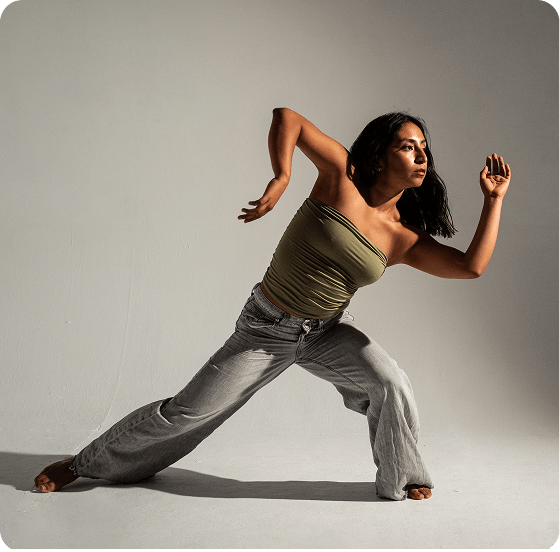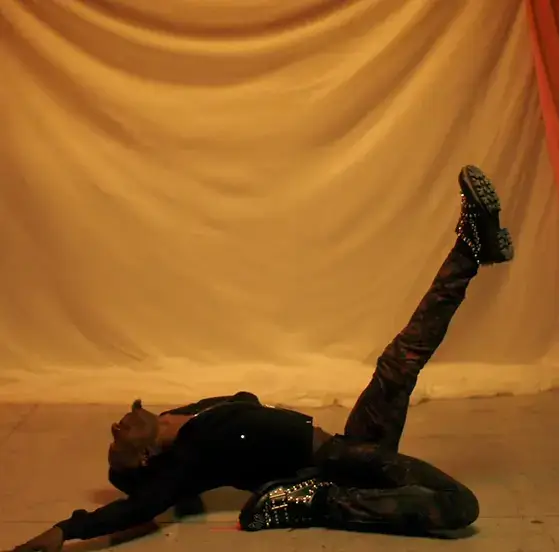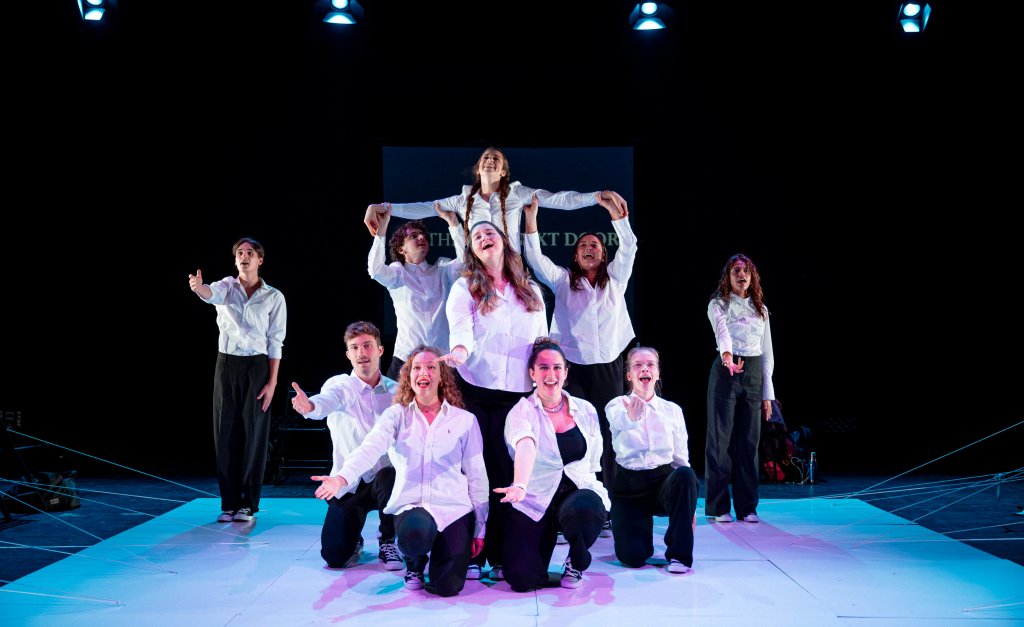It has been over 20 years since I entered the contemporary dance industry, and much has changed during that time. When I was offered a full scholarship at one of Europe’s top conservatoires for classical and contemporary dance, I felt like my dreams were within reach. I knew it would take relentless hard work to achieve my goal of joining a world-renowned company, but I believed that having a prestigious name on my CV would open doors—and in many ways, it did.
Vocational training provided me with access to auditions and opportunities I may never have reached from my local Brazilian school alone. Yet, as I approached the end of my professional training, reality hit hard. Despite attending numerous auditions, I hadn’t secured a fixed-term contract. At the time, there was very little talk of “portfolio careers” or the idea that a dancer’s professional path could be fluid and multifaceted.
Freelancing was a known option, but one that I found daunting—mainly due to my perception of financial instability and uncertainty.
Then, with just two weeks left of training, everything changed. I was selected to join a project based dance company for a new creation, and just like that, my unexpected freelance career began.
What I quickly discovered was that being a contemporary dancer opens doors to a wide variety of opportunities
—many of which I had never even considered.
Freelancing allowed me to perform in a rich mix of contexts: small-scale project-based companies, large-scale operas, music videos, research collaborations with PhD students in costume and shoe design, and more. Later, I also worked in full-time funded companies, which led me into discovering new roles—teaching, rehearsal directing, and eventually, photography.
The experience taught me that a contemporary dancer’s career isn’t limited to a single track. The field is broad, flexible, and rich with possibility. For those navigating their way into or through this profession—especially dancers approaching graduation or in a career transition—here are some of the many fulfilling paths available beyond traditional company work.
Working as Contemporary Dance Performers
While joining a company is still a goal for many dancers, freelancing can offer greater freedom, flexibility, and creative diversity.
Freelancers can move between different projects and disciplines—working in festivals, galleries, on one-off commissions, or longer residencies. Some dancers step into choreography, creating original work either independently or for schools, companies, or curated festivals. Others find their calling as movement directors, working in theatre, film, or even commercial settings.
This variety keeps your practice fresh and your network broad. You learn to collaborate widely and adapt to different creative processes—an invaluable skill in today’s interdisciplinary arts scene.
Working as Contemporary Dance teachers and instructors
Teaching is often seen as a fallback, but I’ve come to see it as one of the most creative, rigorous, and rewarding parts of my journey. It’s a space where I get to keep growing while sharing what I’ve learned with others.
As a dance teacher one can work in conservatoires, universities, schools, or studios, covering a wide range of subjects from technique to choreography. Leading workshops in schools, community centres, or outreach programmes offers another avenue to engage diverse groups. Inclusive dance facilitation is an increasingly important role, supporting disabled, neurodivergent, or older participants in accessing the physical and emotional benefits of dance. Working with children and teens as a youth dance leader helps foster creativity, confidence, and physical literacy at a crucial stage in their development.
Ultimately, educational roles in dance aren’t just about “giving back”—they’re about shaping the future of the field and remaining connected to its core values.
Working as dance therapists and somatic practitioners
The connection between movement and wellbeing is something I’ve come to value deeply, and many dancers discover real purpose in exploring this intersection.
Roles in therapeutic and somatic fields can be incredibly fulfilling, especially for those who are drawn to healing and body-mind integration. Some go on to train as Dance Movement Psychotherapists, using movement to help clients process emotions and life experiences. Others become somatic practitioners, teaching approaches like the Alexander Technique, Feldenkrais, or Body-Mind Centering to support deeper body awareness and alignment. Teaching yoga or Pilates is also a natural progression for many dancers—not only as a source of income, but as a way to care for their own bodies.
These paths offer a chance to engage with movement in a more introspective, nurturing way, while still drawing on the deep knowledge developed through years of dance practice.
Working as artistic directors, producers and dramaturgs
Dance naturally intersects with other industries such as fashion, technology, music, design, and visual art. Dancers carry a unique physical intelligence that translates beautifully across creative fields.
Many go on to become artistic directors or producers, leading companies, curating work, or managing events. Others take on roles as dramaturgs or rehearsal directors, supporting choreographers through thoughtful process guidance. Collaboration is also a key part of this world—working with architects, costume designers, musicians, or digital artists. Some dancers explore motion capture, lending their movement to animated films, games, or VR experiences.
Working as dance photographers and videographers
And many, like me, step behind the camera, becoming videomakers or photographers who understand movement in ways few others can. Whether documenting performances, creating promotional material, or making dance films, this work reshapes how dance is experienced and often leads into marketing or content creation roles.
In today’s creative landscape, dancers are uniquely positioned to work across disciplines and redefine what a career in the arts can look like.
Working as dance entrepreneurs, founders, agents and consultants
Dancers are, at heart, natural entrepreneurs. We’re used to thinking creatively, adapting quickly, and turning vision into action—skills that translate seamlessly into building something of our own.
Some dancers go on to found studios or companies rooted in their values and artistic voice, creating spaces for others to gather, learn, and grow. Others step into dance entrepreneurship by designing digital tools, online classes, live events, or merchandise that speaks directly to the dance community. There are also those who become agents or consultants, helping fellow artists navigate their careers, build their brands, or negotiate contracts with more confidence. And behind many successful projects are dancers who’ve become skilled grant writers or producers, using their insight to secure funding and bring ideas to life.
Working as dance writers, critics, academics or researchers
Finally, many dancers find themselves drawn to roles that shape how dance is seen, understood, and supported. Some become dance writers or critics, offering reflections, reviews, or essays that deepen public dialogue around performance and practice—whether through journals, websites, or personal blogs. Others pursue academic or research pathways, contributing to the field through practice-based or theoretical inquiry. And some move into advocacy or policy, working within organisations, councils, or government to influence how the arts are valued and funded.
These roles might not take place on stage, but they are vital in ensuring dance remains a visible, evolving force in culture and society. They allow dancers to help shape the narrative around the artform—ensuring it continues to thrive in an ever-changing world.
Contemporary dance training offers far more than just technical skills—it equips dancers with a diverse range of transferable abilities that can be applied in various industries. From creativity and problem-solving to communication, discipline, and collaboration, these skills make dancers highly adaptable professionals.
As I’ve discovered over the years, the idea of a portfolio career has become not just a necessity but a thrilling opportunity. My journey has taken me through many different roles—performer, teacher, rehearsal director, photographer, and even Head of Operations. Each one has allowed me to stretch and evolve, finding new ways to express my creativity and use my expertise.
Today, more than ever, we have the freedom to shape our careers, blending passions and skill sets into something unique and fulfilling. Whether it’s performing on stage, leading a class, capturing a moment through a camera lens, or steering the operations of a company, the possibilities are endless. I’ve learned that embracing this fluidity not only fuels my own growth but also enables me to stay connected to the heart of what I love—dance.
If you’re at the start of your career or navigating a change, remember that your dance training has already equipped you with everything you need to thrive in multiple fields. The world is waiting for you to embrace your versatility and create your own path.






